
Do you have an idea for improving this content? We’d love your input.
- Subject:
- Communication
- Speaking and Listening
- Material Type:
- Textbook
- Author:
- Anna McCollum
- Sharon Holderman
- Date Added:
- 07/27/2022

Do you have an idea for improving this content? We’d love your input.

Do you have an idea for improving this content? We’d love your input.

Do you have an idea for improving this content? We’d love your input.
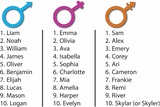
Do you have an idea for improving this content? We’d love your input.

Do you have an idea for improving this content? We’d love your input.

Do you have an idea for improving this content? We’d love your input.

In a traditional English Language class of 90 minutes with 50 students , the percentage of time spent by students to speak is too less i-e hardly 45 seconds per student. It reflects very less rather NO practicing time left for students to polish their speaking skills and thus they are left fumbling for words and speak incorrect English.

Story circles can be used to build a sense of community in the classroom. The technique was pioneered by the late John O’Neal, a civil rights activist and theater artist. He developed the story circle process while moderating audience discussions after performances. He found that audience members listened more and found common ground by telling personal stories instead of trying to persuade and argue their points.
The videos here demonstrate how a story circle works. A facilitator offers a prompt, and then individuals have a set amount of time to respond with a relevant story from their lives. No one interrupts. After everyone has a turn, the group talks together. From the individual stories, the group then creates one story or takeaway.
In these videos, Bob Martin, a community arts specialist in Eastern Kentucky, facilitates a story circle, adapted to an online format because of the COVID-19 pandemic. In the first video, Martin explains the ground rules and quotes O’Neal: “Share the story that comes from the deepest place.” He gives the group this prompt: Tell a story about a time when you were unexpectedly proud of your place or your community.

These lesson plans and activities were purposed and designed by Paula Turon Loren for Kindergarden English teachers in the United Kingdom. The activity is designed and differentiated for different ability groups, thus teachers can adapt the lesson to their students levels and needs. Moreover, the materials may be used and adapted for any country's specific context.

Objectives of this mini unit:For students to explore the "universal call to action" laid out in the Sustainable Development Goals (SDGs) and consider how they may respond to that call;Build background knowledge about specific issues impacting the Arctic including: indigenous rights, indigenous health, biodiversity, tourism and marine pollution; Build background knowledge about specific issues impacting their local communtiy (using Michigan as a case-study) including: hunger, homelessness, poverty, youth violence and the environment;Create an action plan to address needs within their local communities driven by their unique passions, interests and skills;Consider the importance of impact vs intention when engaging with community action projects

This module explores modern day apathy, specifically in middle schools. This PBL challenges students to be introspective and reflect onWhat they valueWhat they are concerned withWhat they are passionate aboutand then see how it can be changed.Students collaborate with oneother to discover shared ideas, research their value or issue, and develop a Public Service Announcement (PSA) to communicate what they want to improve. In a culminating activity, students participate in a gallery/exhibition to share their PSAs.Standards:CCSS English Language Arts (Grade 8)Ohio Standards for Technology
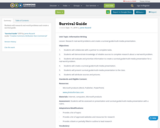
Students will research real-world problems and create a survival guide.

Students will use the Design Process to build and test multiple wind turbine designs in order to generate electricity.

Students will use the Design Process to build and test multiple wind turbine designs in order to generate electricity.

Lesson for middle schools students in Study Skills classes or any class where a teacher/counselor wants to teach/review a strategy for taking effective class notes.

This lesson plan focuses on simple concepts that students can use to practice speaking English. Since advertising is a universal topic, you can use this lesson with students of all levels and interests. In this lesson, students are introduced to vocabulary and concepts related to brands, target markets and advertising channels. Also, they will have the opportunity to talk about the pros and cons of advertising. While doing so, you can encourage your students to use adjectives to talk about their opinions and/or experiences.If you want additional lesson plans and support, including teachers’ notes, be sure to register for a free Off2Class account.
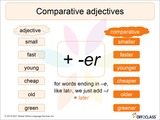
This lesson is the first of three on the topic. It is designed so that teachers can introduce new concepts to students engagingly and educationally. You can teach this lesson to beginner, elementary English speakers or use it as a review for more intermediate-level speakers. This lesson can also be used during individual and group lessons. Keep in mind that age does not necessarily correlate with a learner’s level of proficiency in English.Before this lesson, students should have prerequisite knowledge of the present simple tense, present continuous tense and the ability to count syllables.If you want additional lesson plans and support, including teachers’ notes, be sure to register for a free Off2Class account.
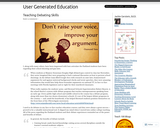
Because of my interest in the Parkland students and my research about the benefits of debating, I decided to have my gifted students, grades 5 and 6, do a debate on teachers being armed in school. The steps for their debate were as follows:
Decide what side of the issue they wanted to be on. I stressed that sometimes being on the side you don’t necessary agree with can be a good exercise, especially for understanding the other side of the issue.
Explore the issue through online research.
Meet with team members to decide what angle of the issue each member would take.
Do online research to find hard evidence to support each of their issues and angles.
Meet with their groups to review their arguments and go over their presentations.
Learn about the structure of the debate
Each side presents their argument – all members of a side present their argument (decided by a coin flip) and then the other side does so.
While one side is presenting their argument, learners on the other side write out questions to ask during the rebuttal round.
In the rebuttal round, questions are asked of the opposing team.
Review the evaluation criteria – on a scale from 1 to 5 with 5 being the highest. Each learner is evaluated by a panel of judges (some other students and me)
How well did the person articulate the argument?
How well did the person use references to support his or her argument?
How well did the person ask questions of the other team?
How well did the person answer questions from the other team?
Do the debate.
Get the judges’ feedback. Add together their scores for each individual and then add these as a team. The team with the highest score wins.
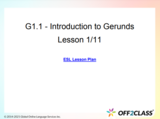
When to start teaching gerunds?As I mentioned before, I used this lesson with a pre-intermediate student and I think this is a great place to start. Regardless of the age of the student, if his/her/their proficiency is pre-intermediate then learning and teaching gerunds will be fun for all of you. Keep in mind that students at this level should have a general idea of how to read, write, speak and understand English; this lesson will help improve these skills.The purpose of this lesson is for students to practice verbs that are followed by gerunds or infinitives with no change in meaning. They will also learn how to determine when to use gerunds or infinitives. Moreover, they will work on answering questions using two sentences: one with the gerund and one with the infinitive. Students will also have the opportunity to create their questions, it’s really fun to see what they come up with. By the end of this lesson, students will be able to make logical sentences using several verbs including love, like, hate, prefer, can’t bear, can’t stand, begin, start and continue.If you want additional lesson plans and support, including teachers’ notes, be sure to register for a free Off2Class account.

Using the C3 Inquiry Design Model format, high school social studies and English students learn to understand lynching in Virginia in the Jim Crow South and discuss ways of taking informed action to move towards racial healing. Each inquiry is supported by the Virginia Standards of Learning and the Common Core Standards and is expected to take three-four 50-minute class periods. The inquiry time frame can expand if teachers think their students need additional instructional experiences (e.g., historical context, formative performance tasks, featured sources, writing, etc.). Teachers are encouraged to adjust the inquiry to meet the needs and interests of their students and school/community contexts. The inquiries lend themselves to differentiation and modeling of historical thinking skills while assisting students in reading a wide variety of sources and writing in a wide variety of genres.Use the next button or the drop down menu to navigate between pages. Please note, Social studies lessons are found at the bottom of page 2 and English lesson are found at the bottom of page 3. For more information and/or access to the primary sources used in the lesson plans, please visit the Racial Terror: Lynching in Virginia website.